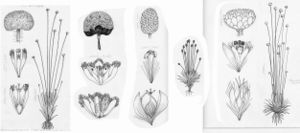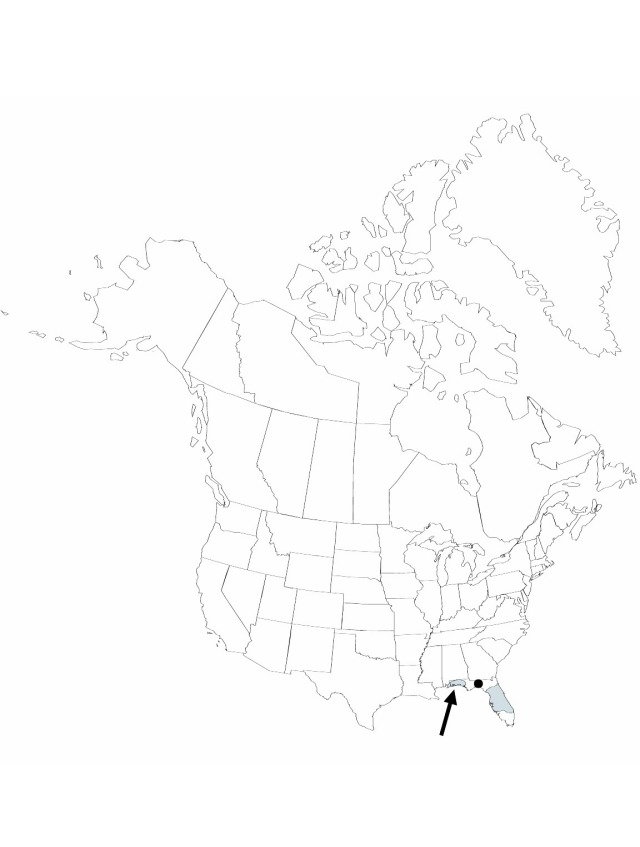Difference between revisions of "Lachnocaulon engleri"
in H. G. A. Engler, Das Pflanzenreich 13[IV,30]: 241. 1903.
imported>Volume Importer |
imported>Volume Importer |
||
| Line 1: | Line 1: | ||
{{Treatment/ID | {{Treatment/ID | ||
|accepted_name=Lachnocaulon engleri | |accepted_name=Lachnocaulon engleri | ||
| − | |accepted_authority=Ruhland | + | |accepted_authority=Ruhland |
|publications={{Treatment/Publication | |publications={{Treatment/Publication | ||
| − | |title=in H. G. A. Engler,Das Pflanzenreich | + | |title=in H. G. A. Engler, Das Pflanzenreich |
|place=13[IV,30]: 241. 1903 | |place=13[IV,30]: 241. 1903 | ||
|year=1903 | |year=1903 | ||
| Line 42: | Line 42: | ||
-->{{#Taxon: | -->{{#Taxon: | ||
name=Lachnocaulon engleri | name=Lachnocaulon engleri | ||
| − | |authority=Ruhland | + | |authority=Ruhland |
|rank=species | |rank=species | ||
|parent rank=genus | |parent rank=genus | ||
| Line 53: | Line 53: | ||
|distribution=Ala.;Fla. | |distribution=Ala.;Fla. | ||
|reference=None | |reference=None | ||
| − | |publication title=in H. G. A. Engler,Das Pflanzenreich | + | |publication title=in H. G. A. Engler, Das Pflanzenreich |
|publication year=1903 | |publication year=1903 | ||
|special status=Illustrated;Endemic;Conservation concern | |special status=Illustrated;Endemic;Conservation concern | ||
| − | |source xml=https:// | + | |source xml=https://bitbucket.org/aafc-mbb/fna-data-curation/src/2e0870ddd59836b60bcf96646a41e87ea5a5943a/coarse_grained_fna_xml/V22/V22_139.xml |
|genus=Lachnocaulon | |genus=Lachnocaulon | ||
|species=Lachnocaulon engleri | |species=Lachnocaulon engleri | ||
Latest revision as of 21:29, 5 November 2020
Herbs, short-lived perennial, solitary or cespitose, forming low domes of rosettes, 6–15 cm. Leaves mostly linear-triangular, 2–4 cm, apex acute. Inflorescences: scape sheaths shorter than or as long as principal leaves; scapes filiform, distally 0.4 mm thick, 4–5-ribbed, glabrous; mature heads dark brown or reddish brown, nearly globose, usually short cylindric by seeding time, 3–4 mm; receptacle densely pilose; involucral bracts soon reflexed, brown, mostly ovate, 1(–1.5) mm, apex broadly acute to obtuse, surfaces glabrous or apex sparsely pilose, hairs translucent, club-shaped; receptacular bracts, dark brown, broadly spatulate or obovate-cuneate, concave, with broad, low, pale keel, 1–1.5 mm, apex short-acuminate, glabrous or abaxial surface with translucent, club-shaped hairs distally. Staminate flowers: sepals 3, dark brown, narrowly spatulate to oblanceolate-cuneate, concave, 1 mm, glabrous or abaxially with scattered translucent, club-shaped hairs distally; androphore pale, narrowly obconic, as long as sepals, glabrous, rarely apex with few club-shaped hairs; stamens 2–3, appendages (2–)3. Pistillate flowers: sepals 3, dark brown, spatulate-oblong, concave, 1 mm, abaxially sparsely pubescent distally, hairs translucent; gynoecium 3-carpellate; styles: apex 3-cleft, appendages 3. Seeds rich translucent brown, broadly ovoid to ellipsoid, 0.4–0.5 mm, longitudinal ribs conspicuous and pale, transverse striae fine forming linear cancellae.
Phenology: Flowering summer–fall.
Habitat: Moist sandy-peaty lake and pond shores, drawdowns, ditchbanks, low sandy clearings in savanna and flatwoods
Elevation: 0–100 m
Discussion
Of conservation concern.
Selected References
None.

